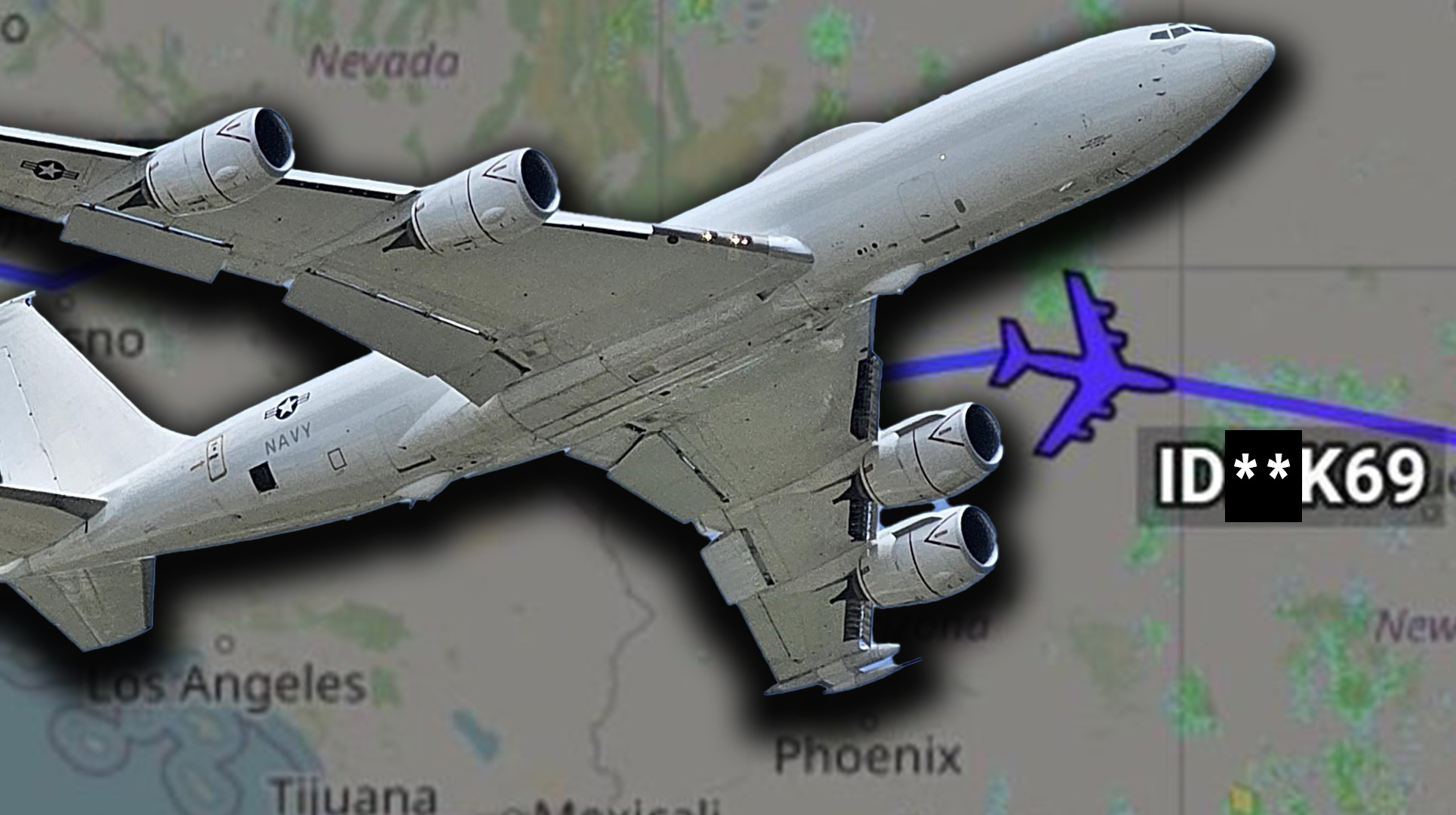

The Navy is telling its aircrews they should push back if their flights are assigned a call sign that could be considered in bad taste after the crew of an E-6B Mercury — sometimes called a “Doomsday” plane — had to change a lewd call sign mid-flight this week, according to Naval Air Forces.
“Going forward, aircrews are being advised to challenge call signs that may be perceived as unprofessional or inappropriate,” said Cmdr. Beth Teach, a spokeswoman for Naval Air Force Pacific Fleet.
The Navy E-6B began broadcasting the “IDICK69” call sign on Monday before it took off from Travis Air Force Base in California, said Ian Petchenik, a spokesman for the flight tracking service Flightradar24.
In-flight call signs are a formal and routine part of both military and civilian aviation, and are different from the nicknames that military pilots assign to each other, which are also known as ‘call signs.’ Pilots use a flight’s call sign when speaking to air traffic controllers, and program the call sign into their navigation equipment, which can be tracked by civilian flight tracking services.
The E-6B continued to use the “IDICK69” call sign until it approached Amarillo, Texas It then switched to another call sign, STOB7, until it landed at Tinker Air Force Base in Oklahoma, Petchenik told Task & Purpose.
Subscribe to Task & Purpose today. Get the latest military news and culture in your inbox daily.
Tinker is the home base for the Navy’s E-6B fleet, which flies in Fleet Air Reconnaissance Squadrons 3 and 4. They are the Navy’s largest plane, based on the now-mostly-retired Boeing 707 airliner. They can serve as a nuke-proof flying command post for national leaders to oversee a major war, hence their occasional label as a ‘Doomsday’ play. They also serve as a radio relay platform for signals to the Navy’s submarine fleet, for which the plane uses a five-mile long antenna trailing behind it as it flies. The planes fly with a crew of 22, according to an Air Force fact sheet.
Several flight trackers posted on social media about the “IDICK69” call sign, including @thenewarea51, who posted audio of the E-6B crew acknowledging its call sign to an air traffic controller.
Teach told Task & Purpose that the E-6B had been randomly assigned the call sign “IDIC69.” That spelling is slightly different from the “IDICK69” call sign detected by Flightradar24 and other flight trackers. Task & Purpose was unable to resolve the disparity between the two spellings.
Call signs that change every day are generated by computers and not vetted prior to being broadcast, Teach said.
“The lettering of the call sign was generated by the Air Force Life Cycle Management Center, independent of the numeric portion which was randomly assigned,” Teach said. “Once squadron leadership learned of the call sign designation, it directed the crew to change to alternate call sign ‘STOB7’ for the remainder of the flight.”
Though the Navy insists that the E-6B’s call sign was computer generated, the military has investigated past incidents of inappropriate call sign.
While some aircrews may consider them to be harmless jokes, raunchy call signs are easily detectable by commercially available flight tracking systems, and they can lead to career implications for service members.
In December 2022, U.S. Air Forces Central Command told Task & Purpose that it would take “appropriate action” after a KC-135 Stratotanker broadcast the call sign “Titties” during a flight over the Middle East. The aircraft’s official call sign was “Inmate 72.”
Prior to that incident, two other KC-135s transmitted the call sign “Boobies” in March 2022 while the planes were on the ground at Al Udeid Air Base in Qatar. That November, a B-1B Lancer also broadcast the call sign “Fuck0107” while on the ground at Tinker Air Force Base.
One thing is sure: In today’s social media environment,there is no longer such a thing as a private joke when it comes to call signs.
